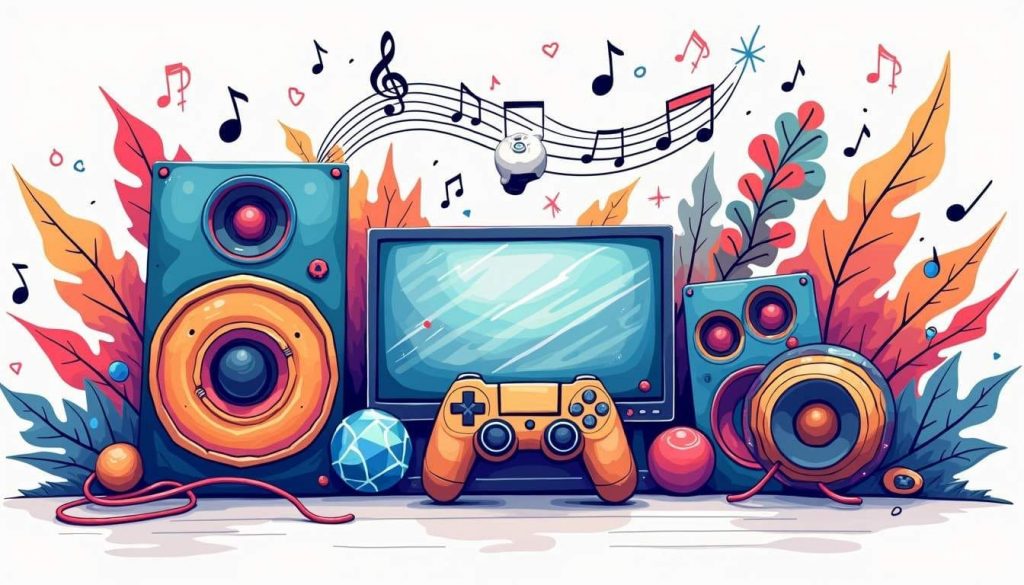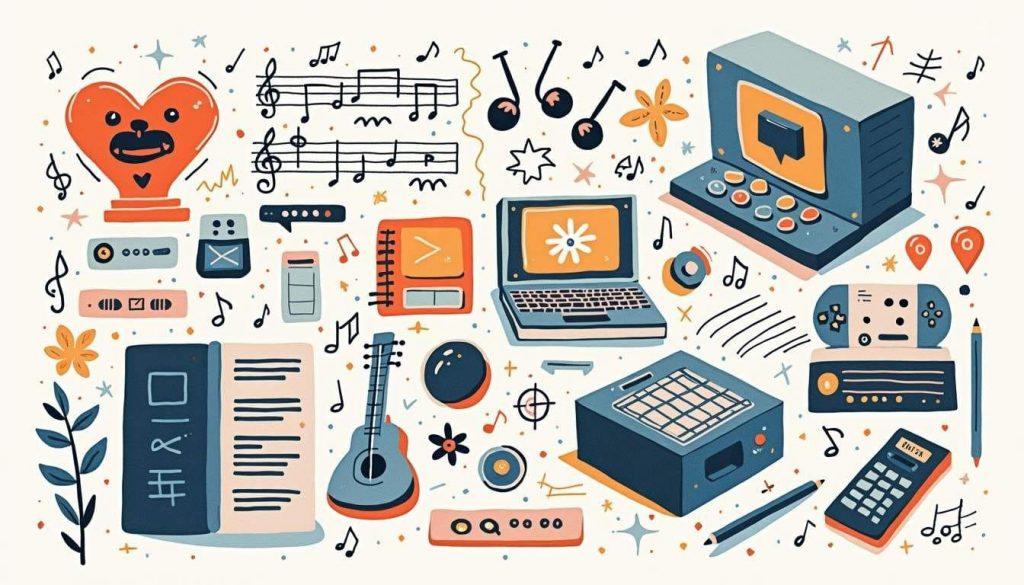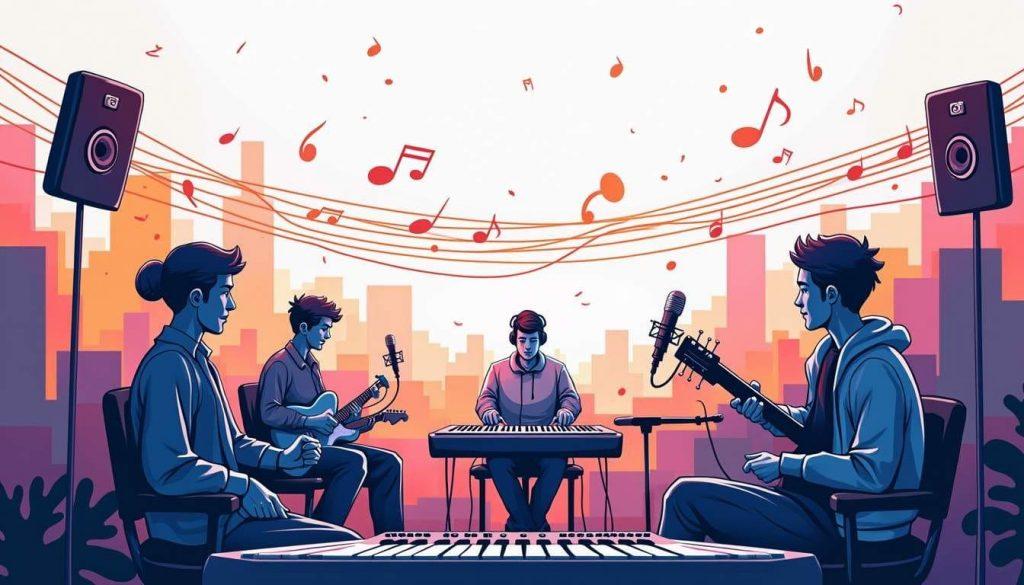The journey of creating music for video games is a fascinating blend of creativity, technical skill, and an understanding of gameplay dynamics. Understanding the game music production timeline helps developers, producers, and composers align on creative goals and project schedules. The process takes a concept from initial ideas to a final score that enhances the entire gaming experience. In this article, we will explore each stage of game music production, from its importance in gaming to the meticulous stages of composition, orchestration, and recording.
The Importance of Game Music in Player Experience
Music is not just a backdrop in video games; it serves as a vital narrative tool that can evoke emotions, set the atmosphere, and contribute to the player’s engagement with the game. The integration of music creates a soundscape that can transform ordinary gameplay into something magical and memorable. It can transport players into fantastical worlds, making them feel as if they are part of the story rather than mere spectators.

As players navigate through a game, music helps to define moments of tension, triumph, and sorrow. The right score can heighten adrenaline during intense battles or provide a soothing ambiance in moments of exploration, guiding players through the emotional landscape of the game. This emotional connection is often what keeps players returning, as they seek to relive those exhilarating moments that the music so effectively encapsulates.
Conceptualization Stage of Game Music Production Timeline
Before a single note is composed, the conceptualization stage lays the groundwork for the entire musical journey. This phase involves deep collaboration between the game designers and composers to establish a vision for the game’s musical theme.

Brainstorming the Game’s Musical Theme
The first step in conceptualization is brainstorming the musical theme. Game Composers often hold discussions with the development team to understand the game’s narrative, characters, and emotional beats. This collaborative approach helps to determine the mood and style of music that will resonate with players.
Workshops and collective brainstorming sessions can yield exciting ideas about instrumentation, melodic direction, and thematic elements. The composer may create a sketch of initial ideas and present them to the team for further refinement, ensuring that the music aligns seamlessly with the game’s vision. These sessions often involve playing reference tracks from other media, allowing the team to articulate their preferences and inspirations, which can lead to innovative musical concepts that might not have been considered otherwise.
Aligning Music with Game’s Genre and Storyline
As the musical ideas take shape, it’s crucial to align them with the game’s genre and storyline. For instance, a horror game will benefit from unsettling soundscapes and dissonant melodies, while a fantasy game might call for a more heroic or ethereal sound.
This understanding helps to ensure that every note produced is functional and supports the gameplay. By creating a musical language that resonates with the game’s themes, the composer sets the tone that will carry players on their journey. Additionally, the integration of motifs tied to specific characters or events can enhance emotional engagement, allowing players to form deeper connections with the narrative. For example, a recurring theme associated with a protagonist can evoke feelings of nostalgia or triumph, while contrasting motifs for antagonists can instill a sense of foreboding, enriching the overall gaming experience.
The Composition Stage
Once the conceptual groundwork is laid, the team moves into the composition stage, where the initial ideas are fleshed out into playable music. This stage is characterized by creativity as melodies and harmonies begin to take form.
Creating the Initial Melodies and Harmonies
The composer typically starts by developing initial melodies that encapsulate the essence of the game. These melodies are often simple yet evocative, serving as the foundation for more complex arrangements. The process frequently involves playing around with various motifs and harmonies until a compelling theme emerges.
Recording these ideas on a digital audio workstation allows the composer to experiment with different instruments and orchestrations, providing a clearer vision of how the final score will sound. This experimentation is crucial, as it allows the composer to explore the emotional range of the music, testing how different sounds can evoke specific feelings in the player. For instance, a bright, major key might be used to convey hope and adventure, while a darker, minor key could underscore tension or conflict, adding depth to the gameplay experience.
Developing Character and Scene-Specific Themes
As the score develops, individual character themes and scene-specific motifs are created. These specific themes serve to enhance character development and can signify important moments within the narrative. Each character may have their own musical identity, allowing players to build stronger connections with them. The process of crafting these themes often involves deep character analysis, where the composer considers the character’s personality traits, backstory, and emotional arcs to create a musical representation that feels authentic and resonant.
Additionally, scene-specific themes are crafted to highlight pivotal moments in the game, ensuring that each emotional peak is underscored by music that draws players deeper into the experience. This melodic layering adds a richness that can resonate profoundly with players, enhancing their journey. For example, a climactic battle scene might feature a driving rhythm and intense orchestration, while a moment of reflection could be accompanied by a softer, more introspective melody. The interplay between these themes not only enriches the narrative but also creates a cohesive auditory landscape that players can immerse themselves in, making the music an integral part of the storytelling process.
Orchestration Stage in Game Soundtrack Production
With composition complete, the next step is orchestration, where the composer translates their musical ideas into full scores. This stage is critical for ensuring that the various musical elements come together harmoniously.
Translating Melodies into Full Orchestral Scores
This process involves taking the initial melodies and arranging them for individual instruments or sections of an orchestra. Proper orchestration requires a deep understanding of how different instruments interact and the unique characteristics they bring to the score.
Composers must consider factors like timbre, dynamics, and textures to effectively convey the music’s emotions. This stage can be incredibly rewarding as the music blooms into a full orchestral arrangement, ready to be brought to life.
Balancing Different Musical Elements
In orchestration, balance is key. The composer must ensure that melodies, harmonies, and rhythms coexist without overshadowing one another. This balancing act requires careful listening and adjustment, as one instrument might dominate or underplay others.
During this phase, real-time feedback from the development team plays a vital role. By collaborating closely, composers can ensure that the music shines, supporting the gameplay without becoming a distraction.
The Recording Stage
The final stage in the production timeline is recording, where the score is captured and prepared for implementation into the game. This stage can be split between studio recordings and live orchestral sessions.

Choosing the Right Musicians and Instruments
Selecting the right musicians to bring the score to life is critical. Considerations such as style, expertise, and chemistry among musicians can significantly influence the final recording’s quality. The composer often auditions musicians or bands to find the ideal fit for the score.
In some cases, a blend of live musicians and recorded samples may be used, especially for larger scores that require various instruments. This flexibility allows composers to enhance the musical depth without being limited by budget or logistical constraints.
Capturing the Music: Studio Recording vs. Live Recording
Finally, when the time comes to record, composers face a choice between studio recording and live recording with an orchestra. Studio recordings can offer control and flexibility, enabling producers to achieve the desired sound through meticulous adjustments.
On the other hand, live recordings capture the raw emotion and spontaneity that can enrich the musical score. Many composers find that the energy of a live session can elevate the music, adding elements that may not have been anticipated during the composition process.
Ultimately, whether through studio recordings or live orchestras, the result is a beautifully crafted score that enhances the player’s experience, culminating the entire game music production journey from concept to final score.
Typical Game Music Production Timeline Breakdown
Stage | Key Activities | Estimated Duration | Main Stakeholders |
|---|---|---|---|
Conceptualization | Mood boards, theme brainstorming, genre alignment | 1–2 weeks | Game Director, Game Composer |
Composition | Writing main themes, motifs, and scene cues | 2–4 weeks | Composer, Audio Lead |
Orchestration | Arranging for instruments, layering sounds | 1–3 weeks | Composer, Orchestrator |
Recording | Studio or live session recording, mixing | 1–2 weeks | Musicians, Audio Engineer |
Implementation | Integrating music into the game engine | 1–2 weeks | Sound Designer, Developer |
If you’re hiring freelance composers or orchestras, factor in both recording costs and revisions. Learn more in our guide on how much video game music costs
Why Game Music Production is Essential for Immersive Gameplay
In conclusion, game music production is more than just creating a soundtrack—it’s about designing an emotional journey that deepens player engagement and brings the game’s world to life. From the first conceptual ideas to the final recorded score, each stage of the process contributes to crafting a unique and immersive experience.
Whether it’s a haunting melody in a horror game or an epic orchestral theme for a fantasy adventure, well-executed music has the power to elevate a game from good to extraordinary. As the gaming industry continues to innovate, the role of game music production will remain a cornerstone of unforgettable gameplay experiences.




